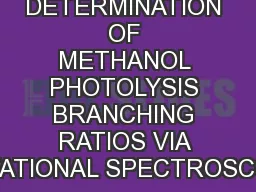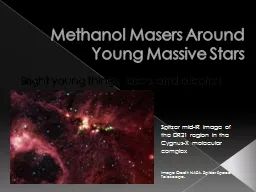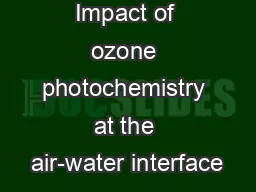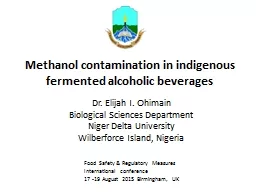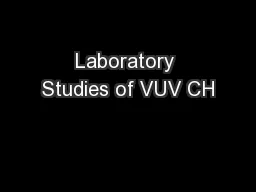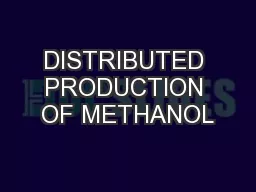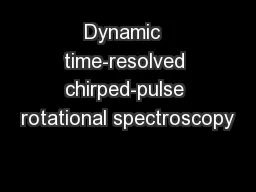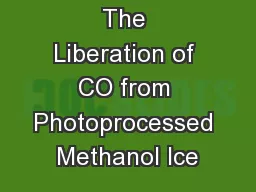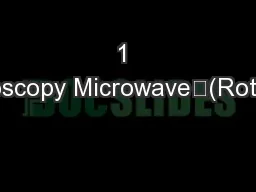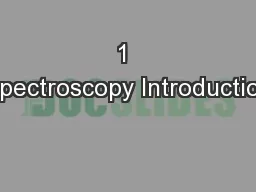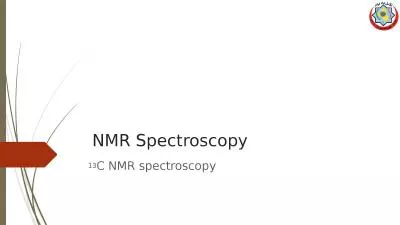PPT- DETERMINATION OF METHANOL PHOTOLYSIS BRANCHING RATIOS VIA ROTATIONAL SPECTROSCOPY
Author : danika-pritchard | Published Date : 2018-02-12
Carson Powers Morgan N McCabe Susanna L Widicus Weaver Department of Chemistry Emory University Wednesday June 21 2017 Garrod R T Widicus Weaver S L amp Herbst
Presentation Embed Code
Download Presentation
Download Presentation The PPT/PDF document " DETERMINATION OF METHANOL PHOTOLYSIS ..." is the property of its rightful owner. Permission is granted to download and print the materials on this website for personal, non-commercial use only, and to display it on your personal computer provided you do not modify the materials and that you retain all copyright notices contained in the materials. By downloading content from our website, you accept the terms of this agreement.
DETERMINATION OF METHANOL PHOTOLYSIS BRANCHING RATIOS VIA ROTATIONAL SPECTROSCOPY: Transcript
Download Rules Of Document
" DETERMINATION OF METHANOL PHOTOLYSIS BRANCHING RATIOS VIA ROTATIONAL SPECTROSCOPY"The content belongs to its owner. You may download and print it for personal use, without modification, and keep all copyright notices. By downloading, you agree to these terms.
Related Documents

